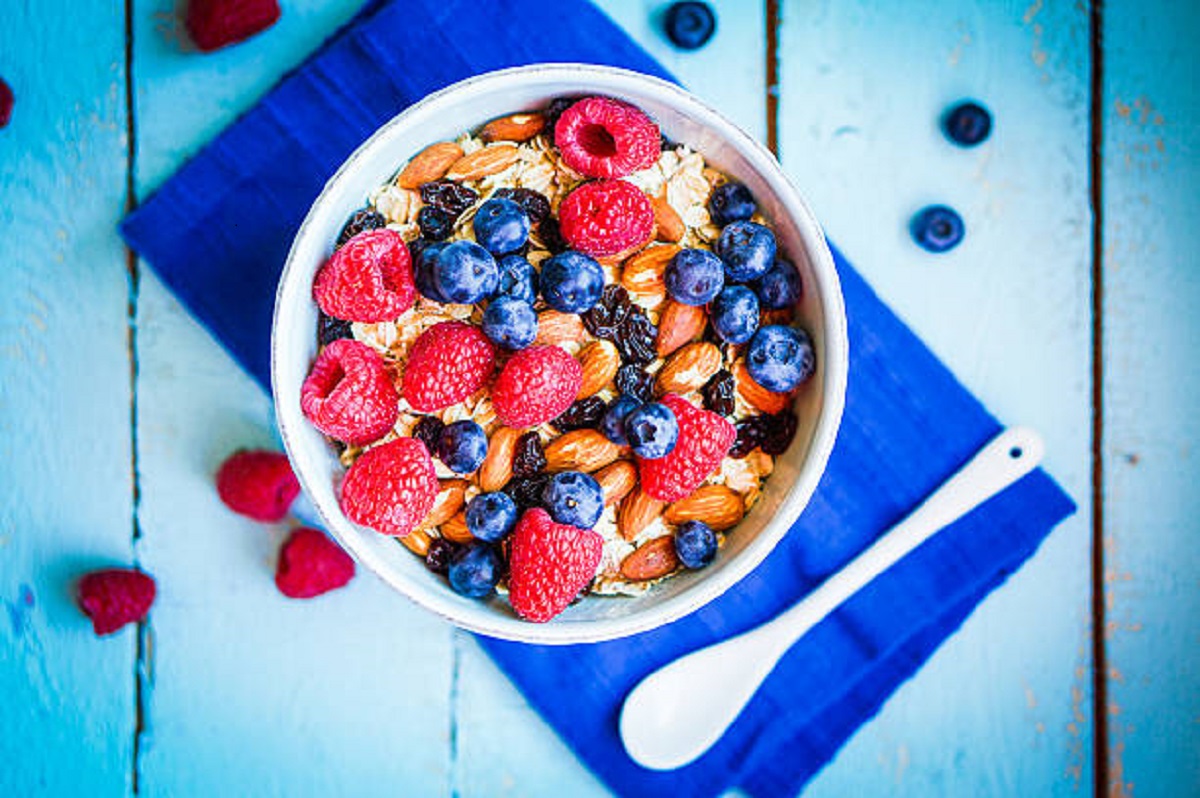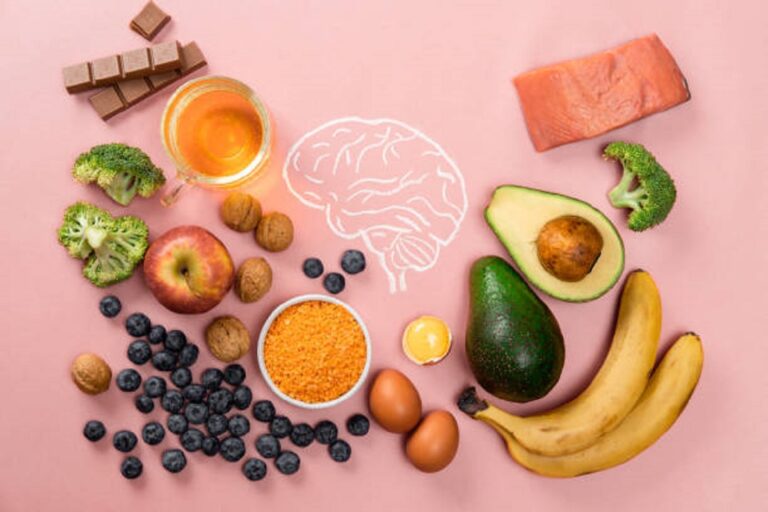WHY NUTRITIONISTS ARE SO OBSESSED WITH FIBER IN 2025
It’s 11:47 at night, my pantry is a mess, and I’m staring at a box of cereal. Do I eat it? Will it help me finally hit those “nutrition goals” everyone keeps throwing around?.
Suddenly, I see another article informing me that fiber is the “miracle nutrient of 2025.” And seriously? My first reaction was, “Great, something else I’m probably not getting enough of.”
But then I continued reading, and something fell into place. Maybe because I’ve felt like trash myself recently tired, bloated, hangry by 3 PM but this fiber thing started to make sense. Not in the “buy-this-gourmet-superfood-powder” sense, but in the “wait, this might actually help my actual problems” sense.
So here we are. Me, still learning, discussing what I learned about why fiber foods 2025 nutrition trends are everywhere we look nowadays and better yet, how regular people like us can actually apply this stuff without losing our minds.
WHY IS FIBER SUDDENLY TRENDING RIGHT NOW IN 2025?
The truth is, Fiber isn’t new. Your grandma probably called it “roughage” and told you to eat your veggies. But in 2025, nutritionists are practically obsessed. Why? Because new research keeps proving that fiber isn’t just about digestion, it’s about everything from gut health to better sleep to even calming stress levels.
This is what nutritionists are not telling you initially: “we’re experiencing a fiber emergency. The average American eats approximately 15 grams of fiber per day. We need 25-35. That deficiency? It’s causing more problems than we realized.”.
Snappy fast answer: Why are nutritionists so fixated on fiber in 2025? New studies reveal that fiber directly affects gut health, blood sugar levels, and even mental acuity along with being the cheapest way to enhance overall well-being without costly supplements.
The 2025 study is wild, legit. Studies are showing that fiber’s not all about. you know, poop.
A Harvard Health report highlights fiber as the unsung hero of modern diets. Meanwhile, the Mayo Clinic calls it “one of the most under-consumed but essential nutrients.” Translation? We’ve all been skipping it, and our bodies are paying the price.
It’s actually feeding the good gut bugs, which then release chemicals that affect:
– Your mood (gut-brain connection is real, people)
– The way even your energy levels throughout the day
– If you’re always getting sick all the time or actually do have good immunity
– The way you sleep (I wasn’t prepared for that one)
And the best part is that, unlike trendy superfoods or expensive probiotics, fiber-rich foods are usually the cheapest things in the grocery store. Beans, oatmeal, frozen berries, sweet potatoes. We’re talking $2-3 for a serving that actually has a health impact.
THE SIMPLE SCIENCE ABOUT FIBER (No PhD Required)
Okay, let me break this down without being all sciency. There are two kinds of fiber, and they’re both necessary:
Soluble fiber: is a sponge. It soaks up cholesterol, retards digestion of sugar (bye-bye, 3 PM crash), and basically makes everything go through your body that much easier. Think: Oatmeal, beans, apples..
Insoluble fiber: is similar to a broom. It sweeps things along and bulkifies. Think: Whole wheat, vegetables, berries.
You need both. And here’s what I’m learning: you don’t have to try too hard to figure out which is which. Just eat a variety of whole foods, and you’ll get both in the process.
The 2025 study is addressing so-called “fiber gap effect”, basically, if you’re consistently not consuming enough fiber, your gut bacteria will start eating away the mucus lining of your intestinal wall instead. Which is gross because it is. But it’s also why so many of us are perpetually tired and bloated throughout the day.
FIBER FOODS 2025 NUTRITION TRENDS YOU’LL ACTUALLY EAT
Here’s the good news: getting more fiber doesn’t have to mean chewing dry bran muffins like punishment. The 2025 nutrition trends are making fiber… dare I say… fun?
Trending Fiber Foods This Year:
• Chickpea everything: From pasta to chips, chickpeas are sneaking into everything. Bonus: they’re cheap.
• High-fiber tortillas: Tacos just got a glow-up. Many brands now pack 8–10 grams of fiber per wrap.
• Veggie snacks: Think lentil puffs, pea crisps, and sweet potato crackers.
• Make use of fruit powders: Companies are blending dried berries into smoothies or even pancake mixes.
. Black beans, lentils, kidney beans, they’re all trending because they’re budget lifesavers.
HOW TO SNEAK FIBER INTO FAMILY MEALS
This one’s for families with picky kids (or picky adults,no judgment in that game). If your family rolls their eyes every time you say “healthy,” try this instead:
• Swap Oatmeal with frozen berries instead of sugary cereal.
• Toss lentils into taco meat. Trust me, no one notices.
• Dessert trick: Blend black beans into brownies (don’t knock it till you try it).
– Add white beans to smoothies (you pretty much can’t even taste them)
– Blend a half-and-half of plain and whole grain pasta
– Add chopped veggies into sauces
– Add a combination of cauliflower rice and plain rice
Small swaps = big fiber wins.
WHY THIS MATTERS FOR STRESSED-OUT FAMILIES
All right, I get it. You’re tired. The kids are clamoring for chicken nuggets. You have 20 minutes between work and soccer practice to figure out dinner. The last thing you need is some individual instructing you to eat more “roughage” (good grief, even the term is terrible).
But the great thing about the high fiber foods 2025 trend that distinguishes it from every other health trend is that it makes your life easier.
When you eat enough fiber:
– You are full longer (fewer snack attacks, less anxiety about planning meals)
– Your blood sugar doesn’t crash wildly (fewer hangry episodes)
– You sleep better (because your digestive system isn’t revving out)
– Get sick less (healthier immune system)
– You have more consistent energy (no more 2 PM coffee ritual)
According to recent research from the American Gut Project, people who eat 30+ different plant foods per week have much more diverse gut bacteria and they’re feeling better about mood, energy, and overall health.
Thirty sounds like a lot, but it’s not. A berry, spinach, and oat smoothie? That’s already three. Beans, tomatoes, onions, and peppers in chili? Another four.
THE “GOOD ENOUGH” FIBER GROCERY LIST
The below fiber foods consistently pop up in 2025 nutrition research, ranked from lowest to highest cost:
Ultra-budget tier:
– Dried beans and lentils (cook a big batch on Sunday)
– Oats (not instant packets, the real deal)
– Bananas
– Frozen mixed vegetables
Regular budget tier:
– Canned beans (yes, they qualify)
– Sweet potatoes
– Frozen berries
– Whole grain bread
Feeling fancy tier:
– Avocados
– Chia seeds
– Fresh berries
– Quinoa
WHAT THE RESEARCH ACTUALLY SAYS (Translated for Humans)
2025 fiber research is compelling, but let me save you from reading 47 scientific studies at 1 AM like I did:
Study #1: Researchers at Harvard found that people who increased fiber intake by 10 grams a day saw a 15% lower risk of heart disease. Ten grams is the equivalent of an apple and a bean serving.
Study #2: Researchers at Stanford found that diets high in fiber increased healthy gut bacteria diversity in two weeks. Two weeks. Not months, not years.
Study #3: Research at King’s College London found people eating 25+ grams of fiber per day had significantly better sleep quality and less tiredness during the day.
For more evidence-based nutrition education, the Academy of Nutrition and Dietetics is excellent for fiber intake resources for families.
The takeaway? Small changes, amazingly huge difference.
THE REAL-LIFE REALITY CHECK
I’ve been doing this for roughly six weeks now, and let me tell you: I’m not a wellness guru with flawless skin and boundless energy. I didn’t wake up as some kind of cleanliness and optimism social media star over night.
Here’s what did happen, though:
– I’m not hungry at 10 AM anymore
– My energy is more stable (less coffee required, which my bank account likes)
– I sleep the entire night through more nights
– I’m not always preoccupied with food
The biggest shock? How easy it was once I stopped trying to be so perfect. I’m not Instagramming meal prep bowls. I’m just adding beans to stuff and snacking on fruit instead of crackers every now and then.
COMMON PITFALLS TO AVOID (That I Definitely Made)
Error #1: Ramping up from 10 grams to 35 grams overnight. Your digestive system will rebel. Go slow, add 5 grams every few days.
Error #2: Not drinking enough water. Fiber without water is like. well, it’s useless. Do half your weight in water ounces daily.
Error #3: Doing only one type of fiber. Mix it up various foods feed different bacteria.
Error #4: Assuming more costly = better. Lentils and oats are nutrition giants that are pennies a serving.
MAKING IT WORK FOR YOUR REAL LIFE
The 2025 trend for fiber foods in nutrition isn’t about being perfect. It’s about making progress. Here’s your really achievable action plan:
Week 1: Introduce one high-fiber food to what you’re already consuming daily. Berries on yogurt. Beans added to a bowl of soup. Something.
Week 2: Try one new high-fiber food. If you’ve never prepared lentils, give them a try. Or switch to whole grain pasta over regular pasta.
Week 3: Discover easy substitutions. Whole grain bread instead of white bread. Brown rice versus white rice. Apple and peanut butter instead of crackers.
Week 4: Get creative with “stealth” additions. Blend vegetables into sauces. Blend chia seeds into smoothies.
It’s not about becoming a perfect fiber-eating machine. It’s about gradually bumping out some of the processed crap with actual food that actually makes you feel a little less awful.
Q: How much fiber do I actually need?
A: Most adults need 25–30 grams a day, but the average person only gets 15. That’s why nutritionists are on this fiber crusade.
Q:Can too much fiber be a bad thing?
A:Yep. Overdo it and you’ll feel bloated. Add it slowly, and drink lots of water.
Q: Is fiber only for digestion?
A:Nope! It also helps control blood sugar, supports heart health, and even boosts satiety (aka: you feel fuller for longer).
Q:Are fiber supplements worth it?
A:They can help, but food sources are cheaper and come with extra vitamins and minerals. Use supplements only if you’re struggling.
THE BOTTOM LINE (Because We’re All Tired)
Here’s something I wish someone had said to me at the beginning of all this fiber stuff: it’s not about becoming a different person who meal-preps quinoa bowls and drinks green smoothies.
It’s about feeling better in the life you already have.
Eating healthy in 2025 feels like chasing some mythical unicorn. Keto, intermittent fasting, gut cleanses, it’s exhausting. But fiber? It’s not a fad. It’s simple, affordable, and actually backed by science.
So next time you’re staring at that cereal box at midnight, maybe grab the oats instead. Or throw beans into your next taco night. Tiny changes that feed your body, your gut, and honestly: your sanity.
Nutritionists being obsessed with fiber foods 2025 nutrition trends isn’t because it’s cool, but because it’s one of the few times that nutrition interventions actually work on real people with real budgets and real time constraints.
You don’t need to bust out the superfoods, or overhaul your whole diet. All you need to do is add plants incrementally to your diet and pay attention to your body.
And if you’re there at midnight reading this and thinking, “Great, one more thing I’m doing wrong” stop. You’re here, you’re learning, and that’s already something. Tomorrow you can add some frozen berries to your yogurt or add a can of beans to your soup.
Small steps. Real food. Better days.
Ready to start your fiber journey? Begin with a simple switch this week and pay attention to how you feel. Your body (and your energy) will thank you.
Author: Princess | SEO Health & Wellness Writer, Food as Medicine Blogger
I help stressed, budget-conscious families cut through health jargon with simple, food-based fixes.
Want more easy, science-backed tips? Subscribe for weekly family-friendly nutrition hacks.




